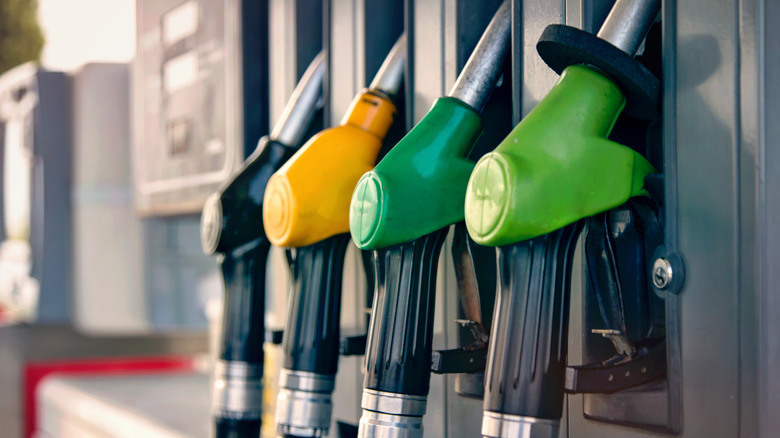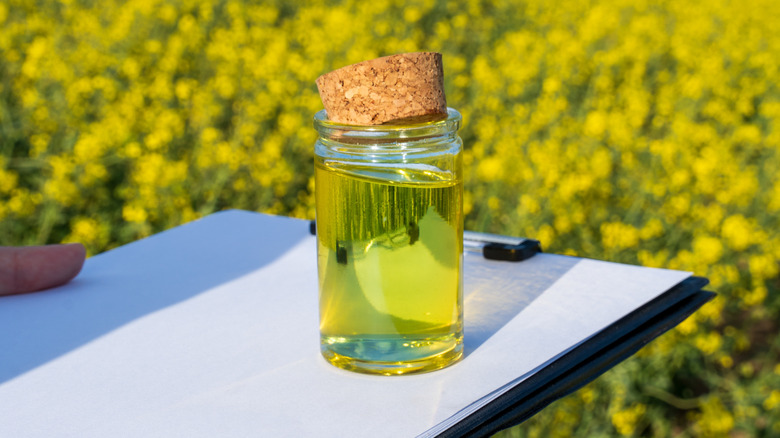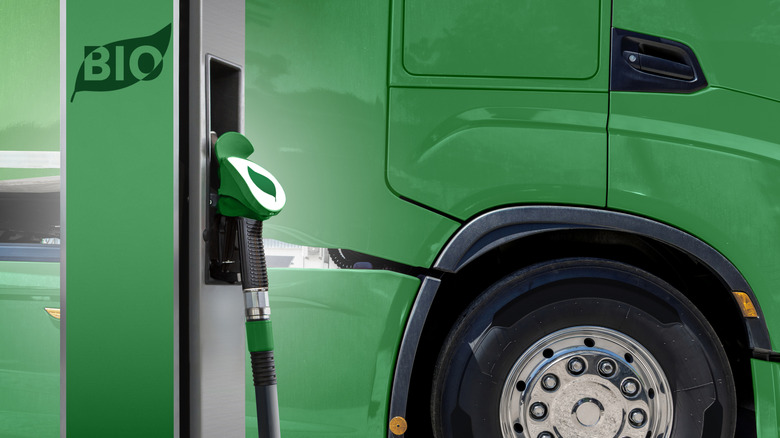Diesel Vs Biodiesel: The Key Differences (And Why They Matter)
A car requires three key factors to run properly, assuming it has an internal combustion engine: fuel, air, and ignition. Among these, the life blood of any internal combustion engine is, of course, the fuel, providing the energy that combines with the pressurized air to create combustion. There have been numerous fuel types over the years, but the most commonly-seen methods around the world today are gasoline and diesel. One might assume that it stops there, but no, these individual fuel types also feature subdivisions, such as TOP TIER™ Approved Gasoline for gas-powered cars and biodiesel for — you guessed it — diesels.
What then, exactly, is biodiesel, and how does it differ from regular diesel? In brief, biodiesel utilizes vegetable oil — much like the types you'd use in cooking — refined through various processes to create working fuel. Typically biodiesel manufacturers use sources such as recycled cooking oils, algae, and animal fats in the fuel's base, though the most common source in the United States comes from soybean oil. Aside from being made from renewable resources, as opposed to fossil fuel-based regular diesel, biodiesel also produces less carbon monoxide emissions due to its richer oxygen content over standard diesel fuel, in addition to producing less harmful particulates and other pollutants.
While this sounds like a miracle fuel, there are a few caveats. Biodiesel degrades rubber, meaning vehicles operating with biodiesel require more frequent inspections and maintenance of gaskets, hoses, and other rubber elements. There are other major pros and cons, of course — so let's take a deeper dive and discuss what these are, how biodiesel is made, and where to find it.
How biodiesel is made
At first glance, it seems more like black magic to be able to pour rendered animal fats and vegetable oil into a diesel engine and expect it to run. Typical diesel is refined from crude oil and biomass materials, resulting in a low-volatility fuel that is actually more energy-efficient than gasoline. Where, then, does biodiesel fit into this equation, given that it necessarily omits any fossil fuels?
The actual chemical composition of biodiesel — that is, what makes it able to generate power — relies on a chemical process known as transesterification. This is a process by which methanol is added to triglycerides, breaking down the mixture into glycerin and fatty acid methyl esters, the latter of which is the principle ingredient in biodiesel. The various oils and fats used in its composition can affect the end product, with different countries and manufacturers around the world preferring different feedstocks, from canola and sunflower oils to used cooking oil or even leftover animal fat.
Biodiesel represents one of the earliest forms of biofuel, as well as one of the most useful. Because it utilizes waste material from places like restaurants and meat-processing facilities, biodiesel effectively recycles what would otherwise be a harmful pollutant in addition to removing an existing fossil fuel, and it's compatible with most diesel combustion engines. Why, then, have we not phased out diesel entirely and replaced it with biodiesel?
The pros and cons of biodiesel vs. regular diesel
One main issue with biodiesel is that it degrades certain elements like fuel lines and gaskets, meaning running a vehicle on pure biodiesel will require modification to the fuel system to keep the biodiesel from eating its way out. Such modifications can cost thousands of dollars per vehicle, and they include replacing key components like fuel lines with polyurethane equivalents and gaskets with thermoplastic elastomers. This problem proves especially problematic with older trucks, which may already have substantial mileage on their powertrains.
All that said, the actual differences between how the fuel itself behaves are minimal. In fact, a 2024 study from Malaysian researchers found that engines perform better when running on biodiesel and require less maintenance. The switch should be easy, since any car that's approved to run on biodiesel can run on regular diesel as well, and vice-versa. The issue, then, comes from the original intended function by the manufacturer. Certain vehicles are built specifically to utilize biodiesel and feature computer programming data and aftertreatment systems designed with biodiesel from the outset. However, most diesel-powered cars today are designed to run on just straight ultra-low sulfur diesel, which remains the status quo for fuel options.
Nevertheless, there is a third option: mixing the two. It's perfectly possible to mix diesel and biodiesel in the same way as mixing regular and premium gas; that is to say, the engine doesn't care, so long as it combusts at the right time with the right energy content. Some engines cannot take pure biodiesel, which is why it's combined with regular diesel. The most common blend for biodiesel is B20, with B5 being a runner-up for fleet vehicles; this uses either up to 20 percent or 5 percent biodiesel, respectively.


